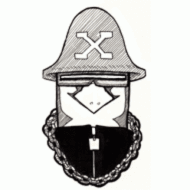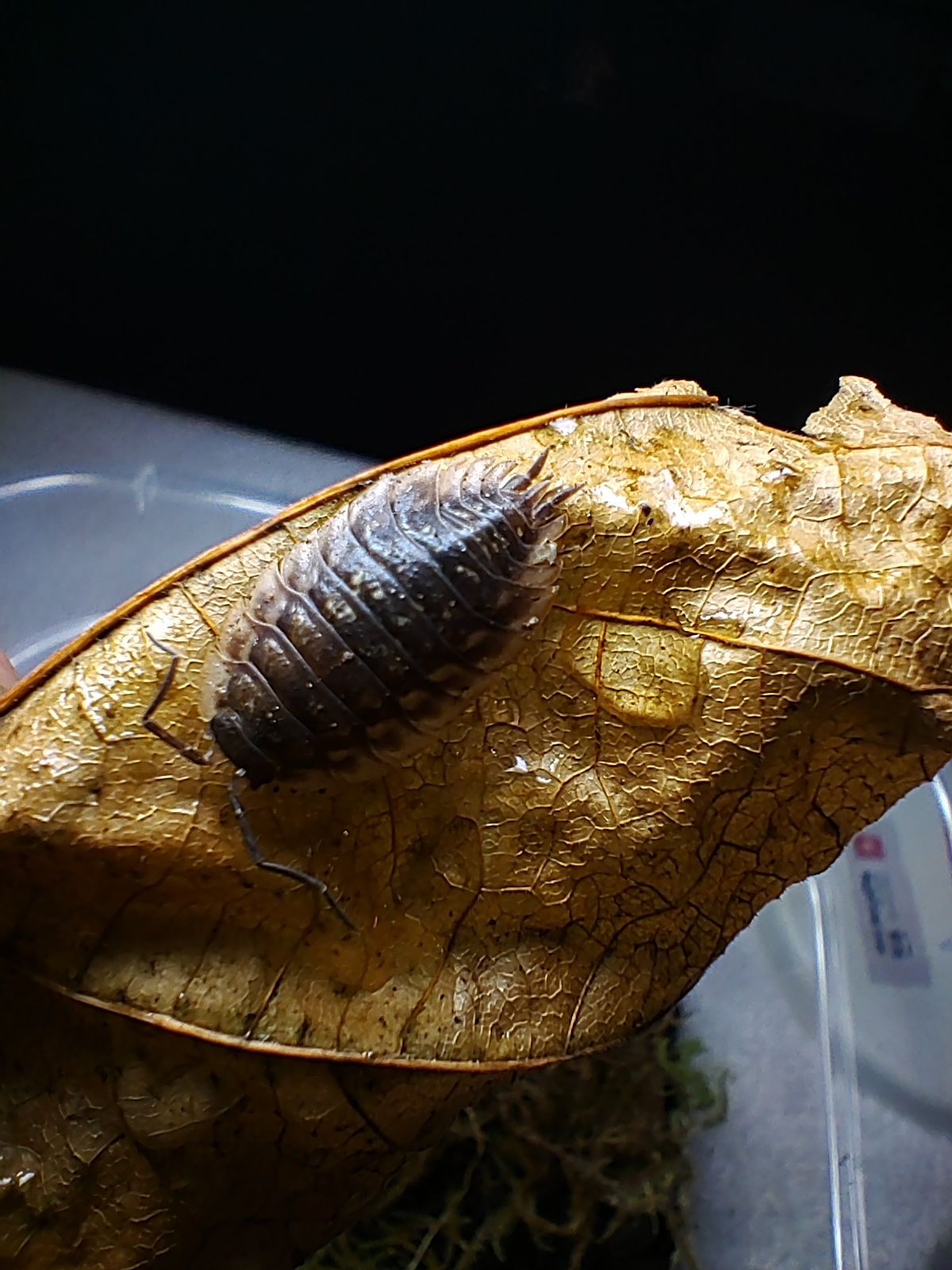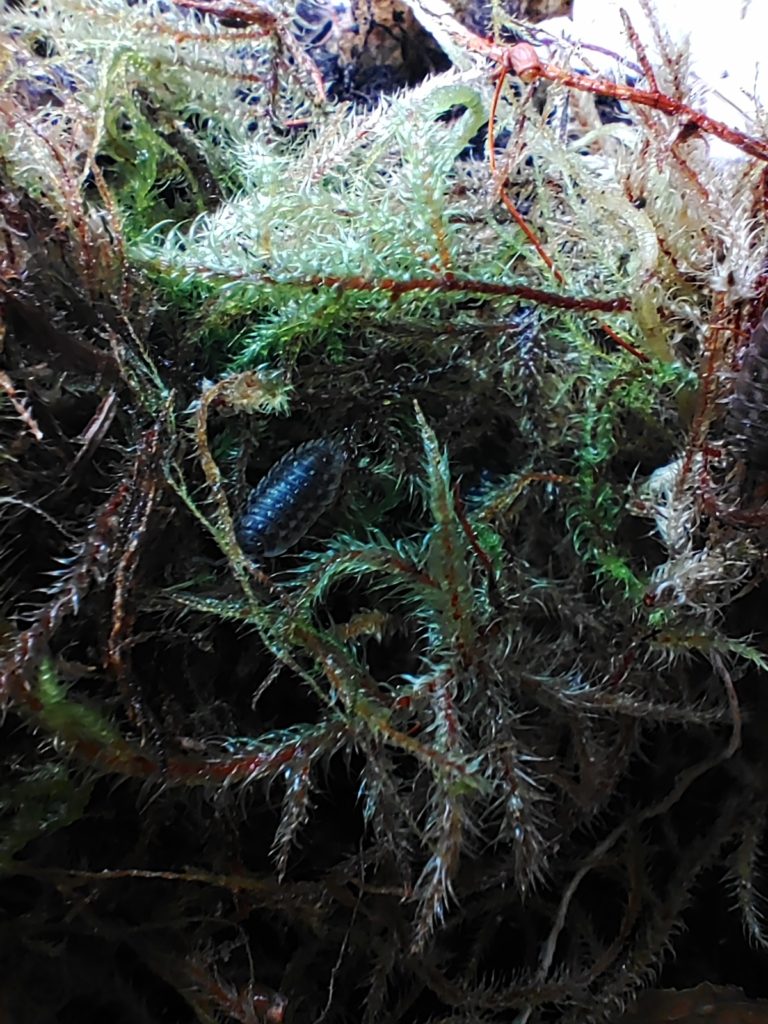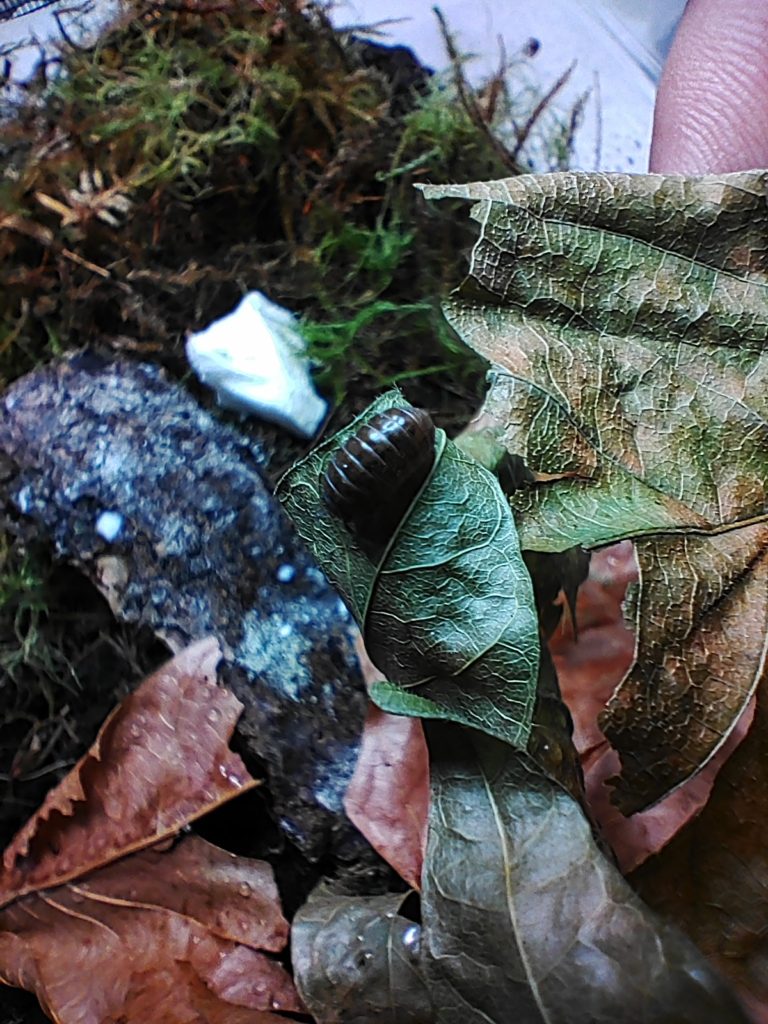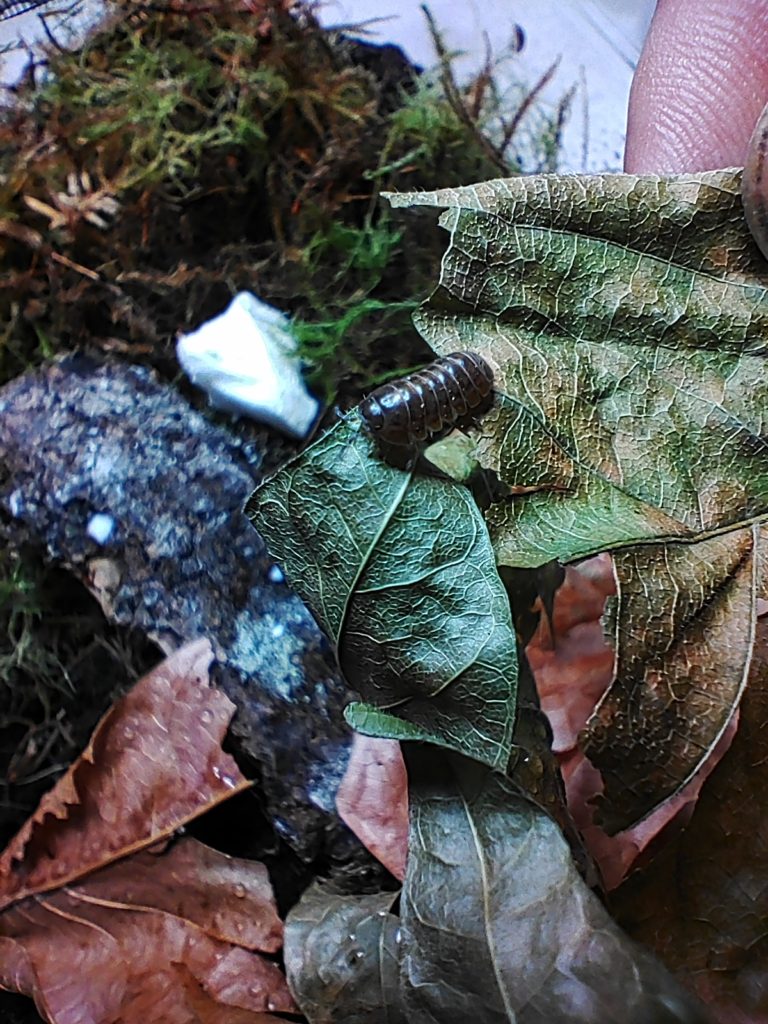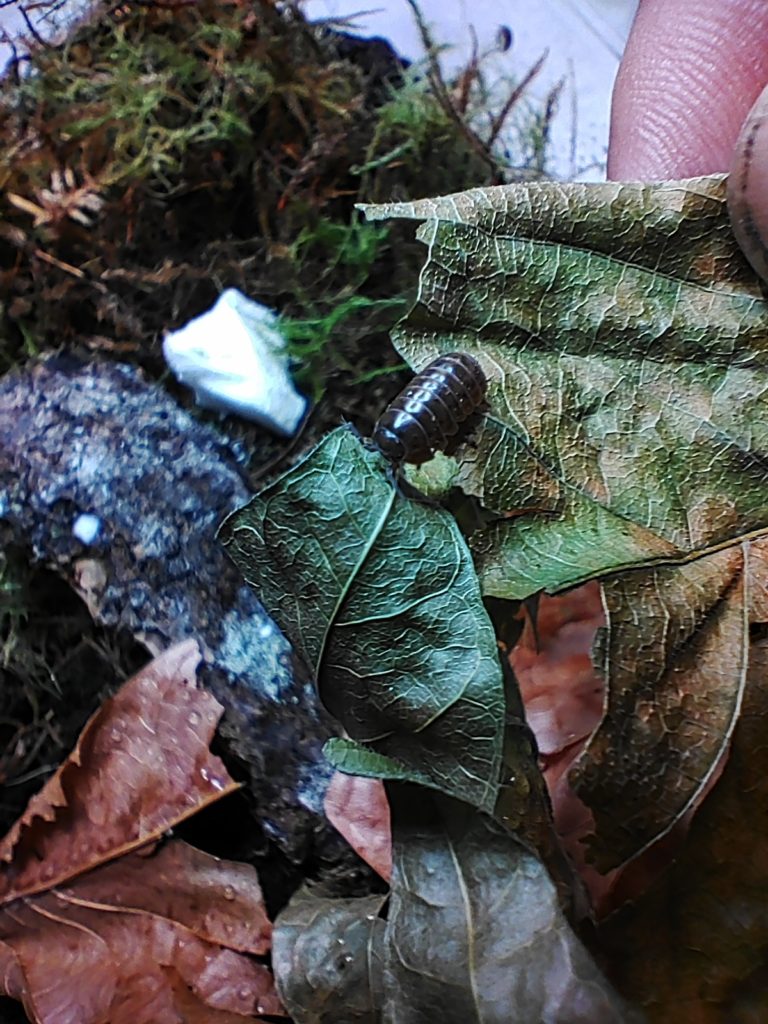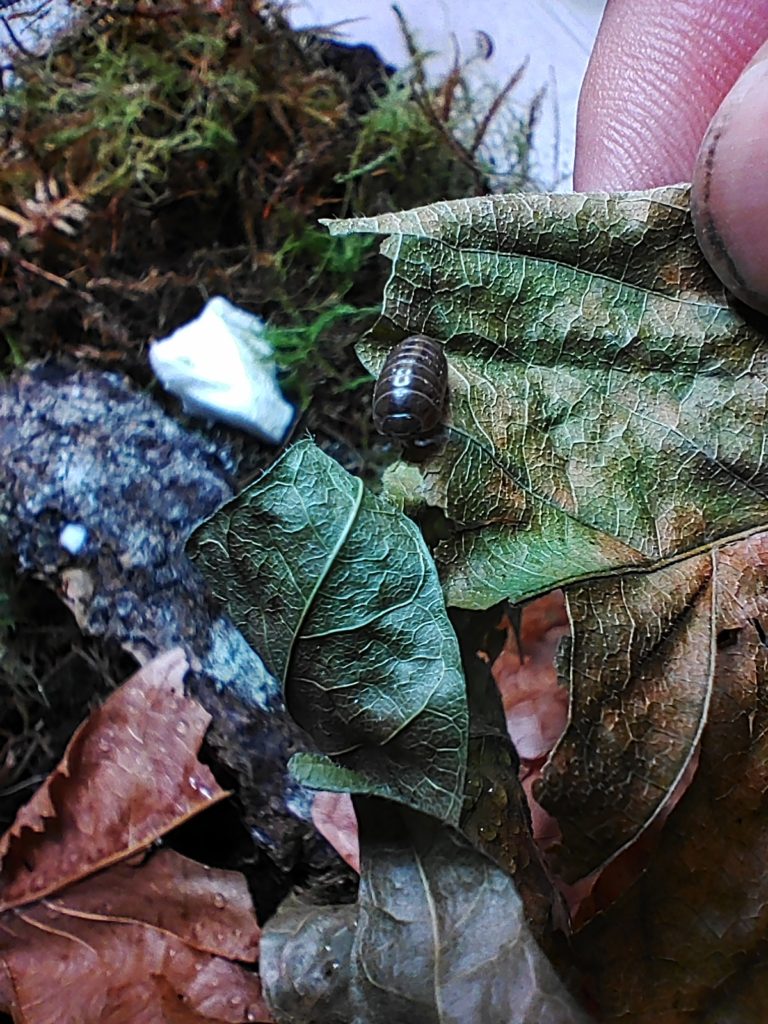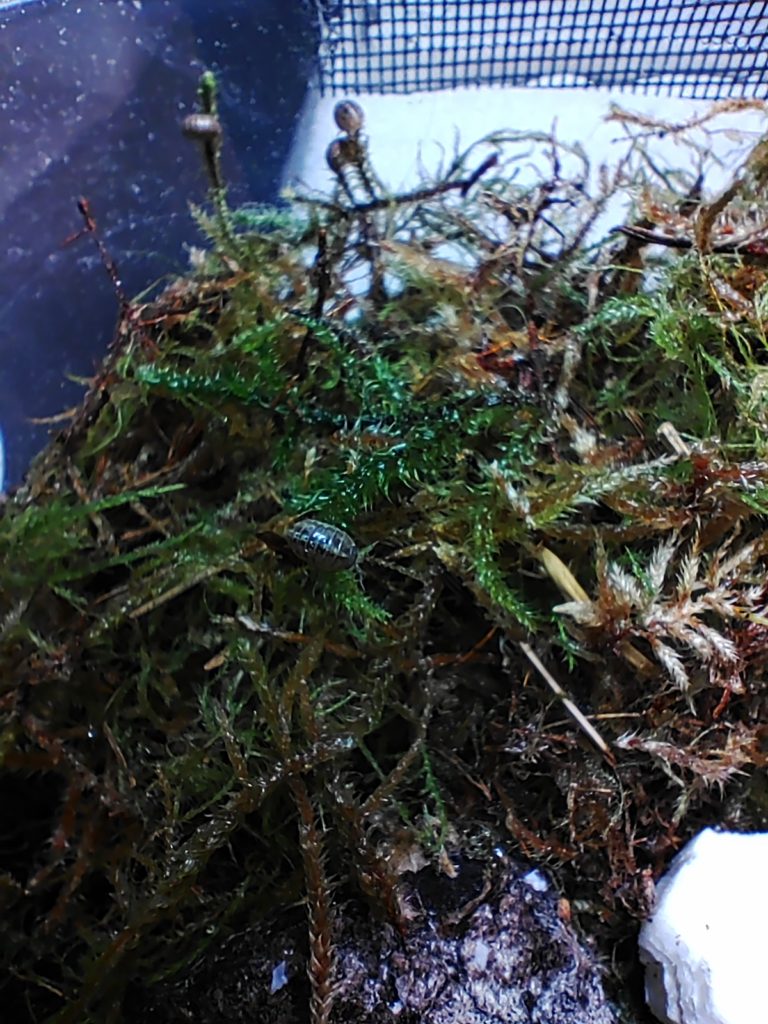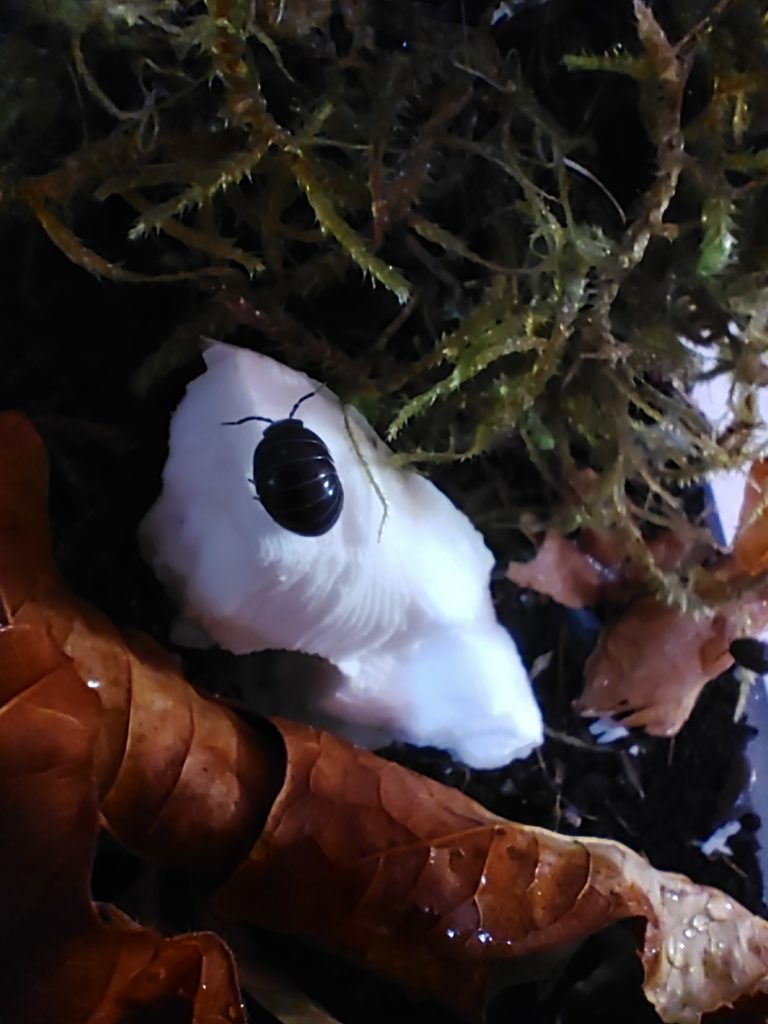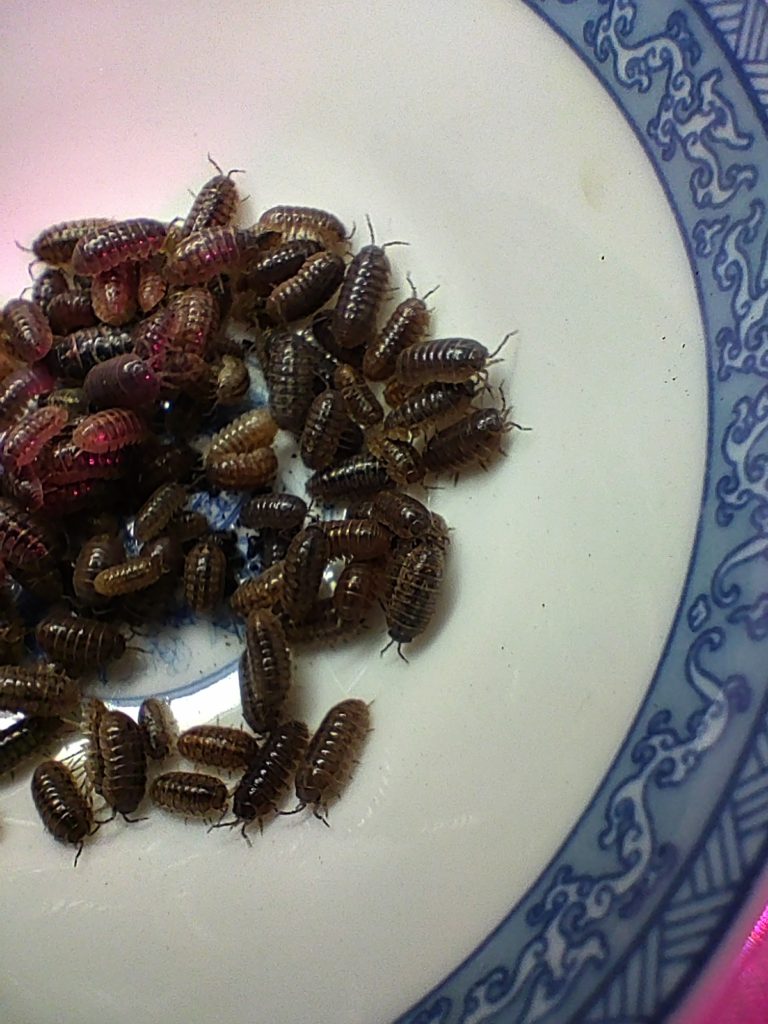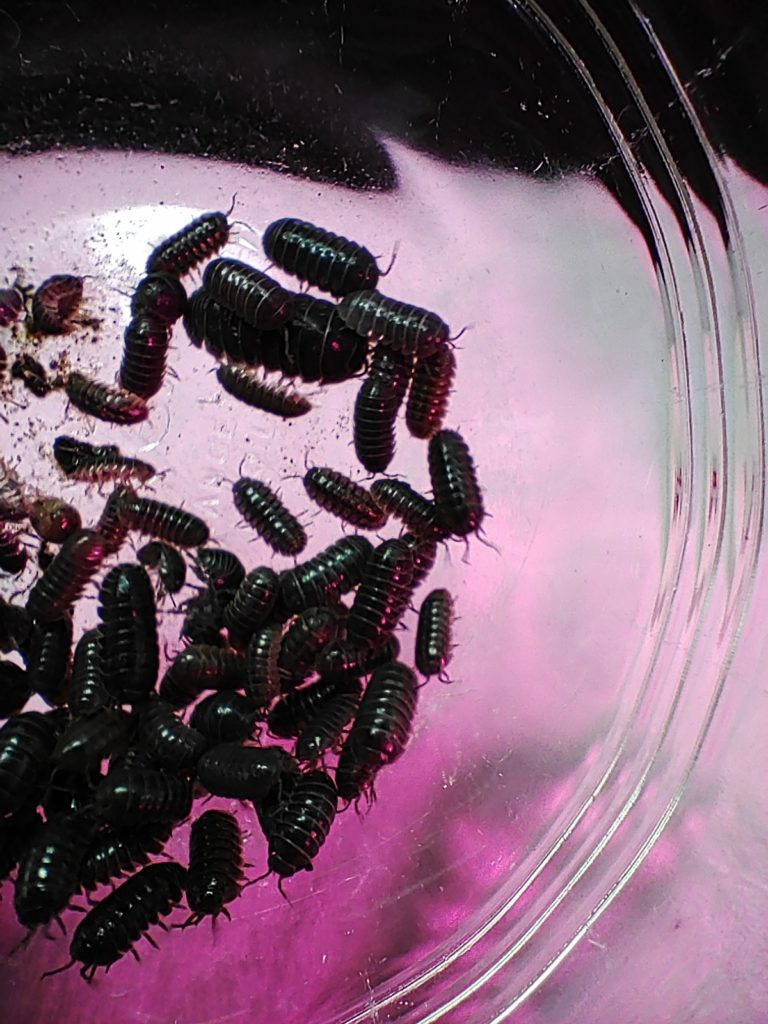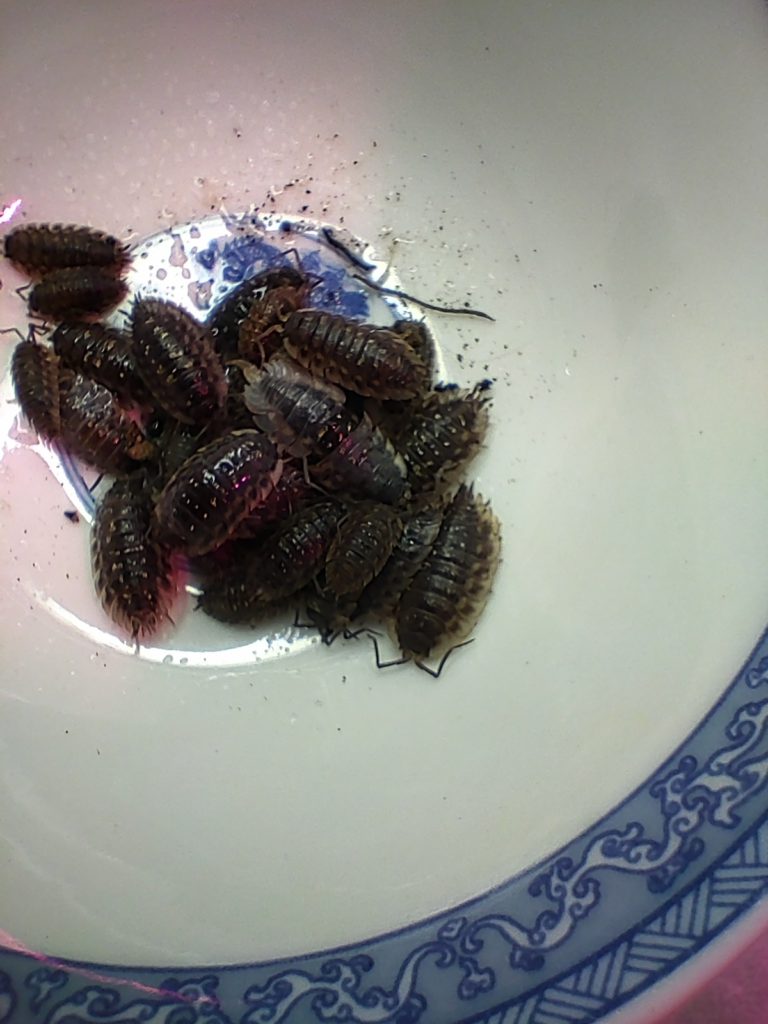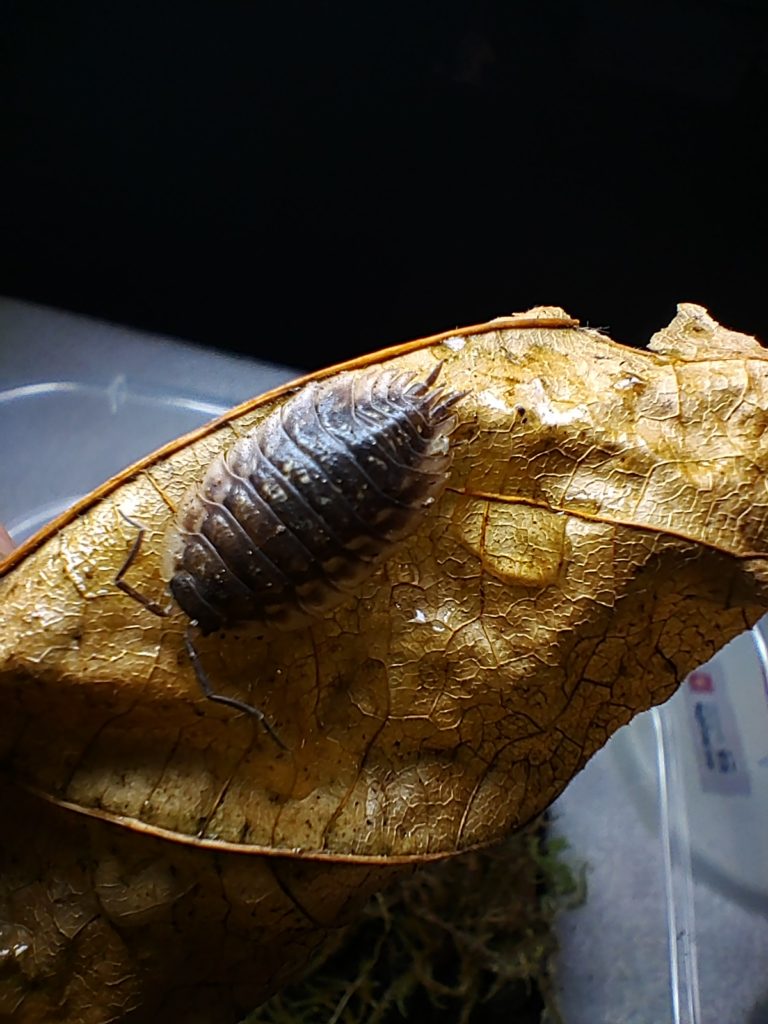I’ve reduced my interactions with the isopods to once every couple of days as I’ve figured out details about feeding routines and moisture requirements for the isopod containers. These bins seem to go through an initial “mold crash” for a few days after setting them up, where leaves, soil, and food items are overrun by long strands of grey mold, which disintegrates when exposed to open air, so my process has been to leave new containers open for about 6 hours the 1st day that this mold appears, then for about 3 hours or however long is needed to “dry out” the inside of the container and kill back any visible mold after that. Contaminated food is removed when this occurs, and new food is usually added a couple days later. This mold seems to become less and less aggressive until by about 4 days after the initial mold appearance, it is gone again, and the container can be kept moist enough that condensation is thick on the side walls without long periods of letting the container sit to “breathe” in the open air.
In my most recent rounds, I’ve noted young isopods (mancae) visible in the soil and leaf litter as I looked around through the powder orange and zebra bins. Several containers are also showing evidence of thriving springtail populations as well, with hundreds of them milling about each the most established tubs. I’d noticed an apparent springtail population explosion in my zebra bin a week ago, and now similar explosions have taken place in several other containers.
Additionally, last weekend as I did some weeding in one of my garden beds, I brought a small container and picked up most of the isopods I uncovered during my work. Even though minimal effort was made and there were many, many escapees, I was surprised to have captured a few hundred isopods! I found there were 3 obvious variations so separated them accordingly. I have no idea at this time what species these are or if I am housing multiple varieties together at this time. “Type A” are shiny black with the classic “rolly polly” appearance, while “Type B” are lighter colored, usually various shades of warm grey or brown. ‘Type C” are a very cool looking “trilobite”-like grey isopod. I have fairly large specimens of bath Type A and C, as photographed in this post’s gallery above.
